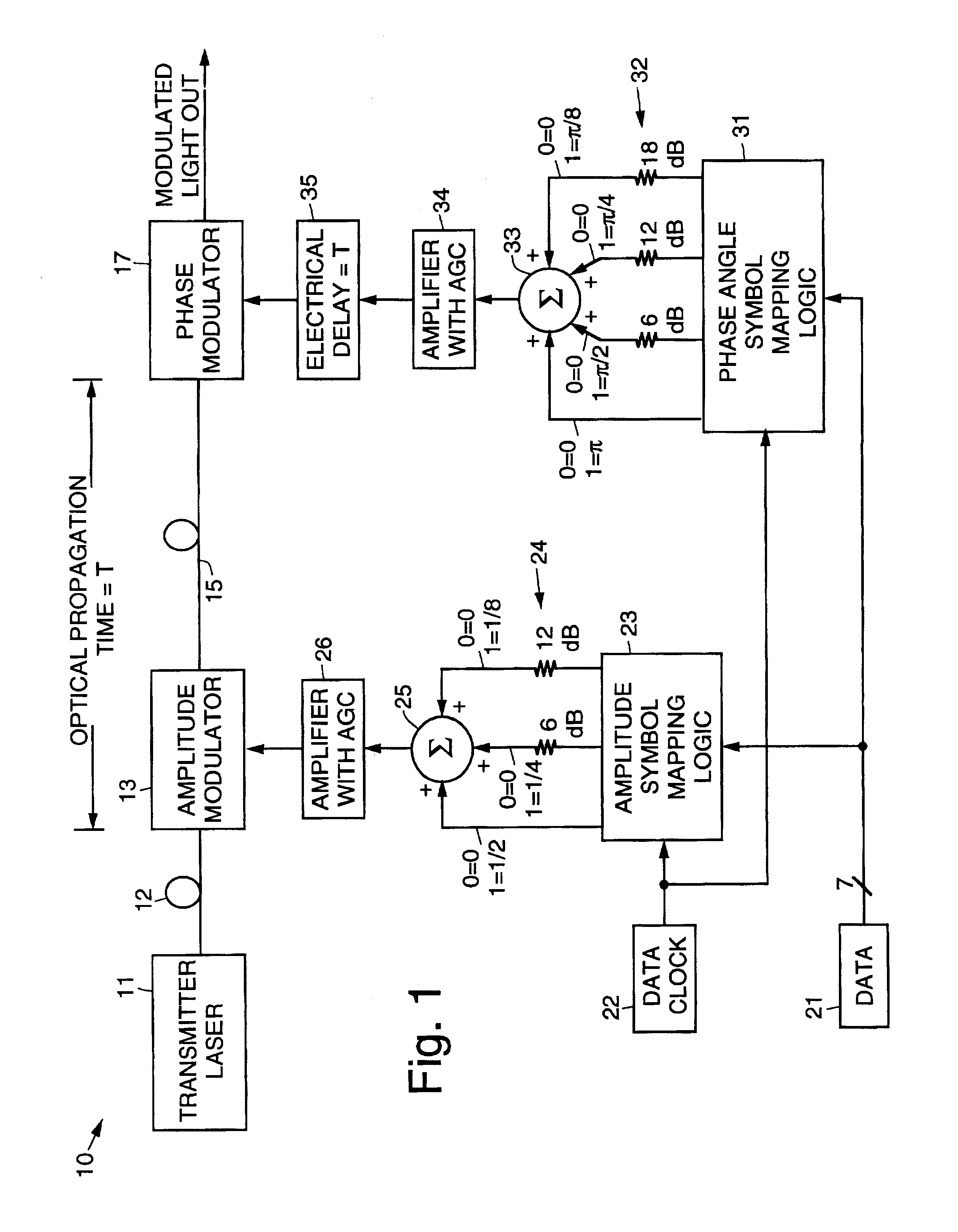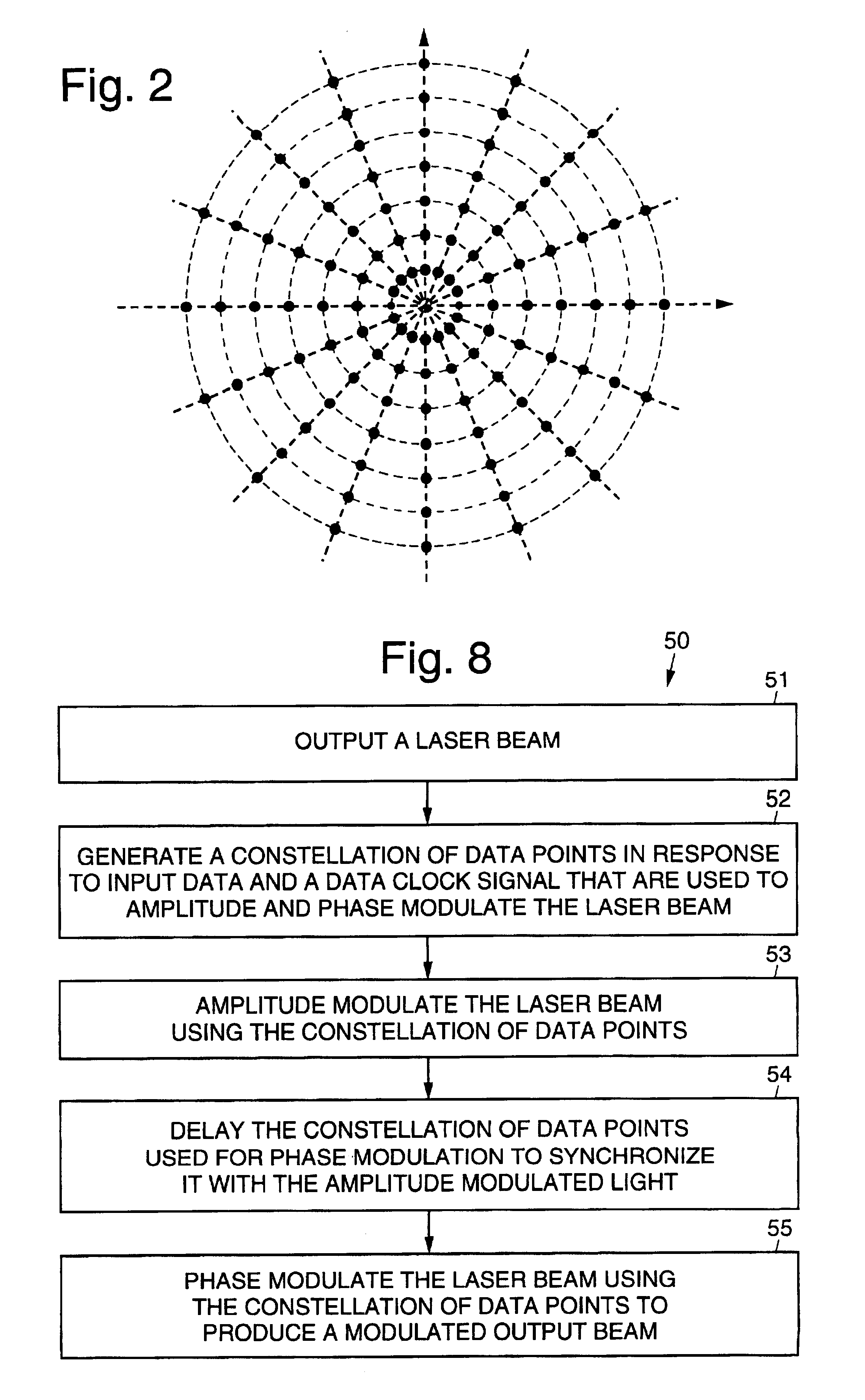Programmable optical vector modulator and method for use in coherent optical communications
a technology of optical communication and modulator, applied in electromagnetic transmission, electrical equipment, transmission, etc., can solve the problem that the binary signal cannot adapt to changing link conditions, and achieve the effect of maximizing data rate, varying optical signal to noise ratio, and maximizing data transmission
- Summary
- Abstract
- Description
- Claims
- Application Information
AI Technical Summary
Benefits of technology
Problems solved by technology
Method used
Image
Examples
Embodiment Construction
[0021]Referring to the drawing figures, FIG. 1 is a block diagram illustrating a first embodiment of an exemplary transmitter 10 in accordance with the principles of the present invention. The transmitter 10 comprises a programmable optical vector modulator 10. The transmitter 10 or programmable optical vector modulator 10 includes a transmitter laser 11, such as a fiber distributed feedback laser or semiconductor distributed feedback laser, for example. The output of the transmitter laser 11 is coupled by way of an optical fiber 12 to an amplitude modulator 13. The output of the amplitude modulator is coupled by way of a length of optical fiber 15 into a phase modulator 17 from which emerges modulated light output from the transmitter 10. The total optical propagation time from the entrance to the amplitude modulator 13 through the optical fiber 15 to the entrance of the phase modulator 17 is labeled “T”.
[0022]Amplitude modulation of the output of the transmitter laser 11 is achiev...
PUM
 Login to View More
Login to View More Abstract
Description
Claims
Application Information
 Login to View More
Login to View More - R&D
- Intellectual Property
- Life Sciences
- Materials
- Tech Scout
- Unparalleled Data Quality
- Higher Quality Content
- 60% Fewer Hallucinations
Browse by: Latest US Patents, China's latest patents, Technical Efficacy Thesaurus, Application Domain, Technology Topic, Popular Technical Reports.
© 2025 PatSnap. All rights reserved.Legal|Privacy policy|Modern Slavery Act Transparency Statement|Sitemap|About US| Contact US: help@patsnap.com



